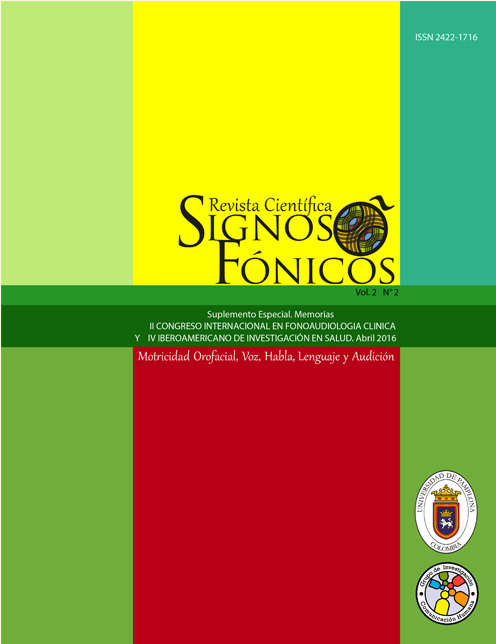Neurobiología de la función motora en la rehabilitación
DOI:
https://doi.org/10.24054/rcsf.v2i2.2111Resumen
Introducción: Para ejecutar movimiento, es necesario partir de una situación de estabilidad en diferentes posturas de la secuencia motora. En ella se encuentran implicados todo el sistema nervioso, músculo esquelético, con diversos reflejos posturales. Las respuestas posturales, resultado de la integración de las aferencias visuales, vestibulares y propioceptivos, son de carácter reflejo dadas en la corteza y otras estructuras, aunque sometidas a ajustes conscientes del sujeto. Por esto se buscó determinar cuáles eran las características de control postural estático en un grupo adultos jóvenes, dependientes de las aferencias del sistema propioceptivo, como elemento base para rehabilitación.
Descargas
Referencias
Newton R; Review of test of standing balance abilities. Brain Inj 3: 335, 1989
Newton RA; Balance screening of a inner city older adult population. Arch Phys Med Rehabil 78: 587, 1997
Misulis K; Head T. Essentials of Clinical Neurophysiology. 3 ed. Neurology, Semmes-Murphey Clinic, Vanderbilt University, & University of Tennessee, Memphis. ECN
O´Sullivan S; Schmitz T. Physical Rehabilitation. 5 ed. Davis Company. USA 2007. 254
Springer B; Marin R; Cyhan T; et al. Normative Values for the Unipedal Stance Test with Eyes Open and Closed. Journal of Geriatric Physical Therapy Vol. 30;1:07
Shumway- Cook A; Woollacott M. Motor Control traslating research into Clinical Practice. 3 ed. W & W. Philadelphia. 2007. 240-245
Rugg S; Whiting W. http://www.humankinetics.com/excerpts/excerpts/five-factors-determine-stability-and-mobility. Five factors determine stability and mobility
Strother G. Physics with aplications in the life sciences. 1 ed. McGraw Hill. Boston. 1977
Hurvitz E, Richardson J, Werner R. Unipedal stance testing in the assessment of peripheral neuropathy. Arch Phys Med Rehabil. 2001;82:198-204
Sheldon J. The effect of age on the control of sway. Gerontology Clinics. 1963;5:129-138.
Brocklehurst J, James-Groom F. Clinical correlates of sway in old age--Sensory modalities. Age Aging. 1982;11:1-10.
Thyssen H, Jansen B. Normal ranges in reproducibility of quantitative Rhomberg’s test. Acta Neurol Scand. 1982;66:100-104.
Bohannon R, Larkin P, Cook A, Gear J, Singer J. Decrease in timed balance test scores with aging. Phys Ther. 1984;64:1067-1070.
Vellas B, Rubenstein L, Ousset P, et al. One-leg standing balance and functional status in a population of 512 community- living elderly persons. Aging. 1997;9:95-98.
Vellas B, Wayne S, Romero L, Baumgartner R, Rubenstein L, Garry P. One-leg balance is an important predictor of injurious falls in older persons [see comments]. J Am Geriatr Soc.1997;45:735-738.
Descargas
Publicado
Número
Sección
Licencia
Derechos de autor 2016 Cesar Eduardo Pabón Rozo, Olga Patricia Gamboa

Esta obra está bajo una licencia internacional Creative Commons Atribución-NoComercial-SinDerivadas 4.0.











